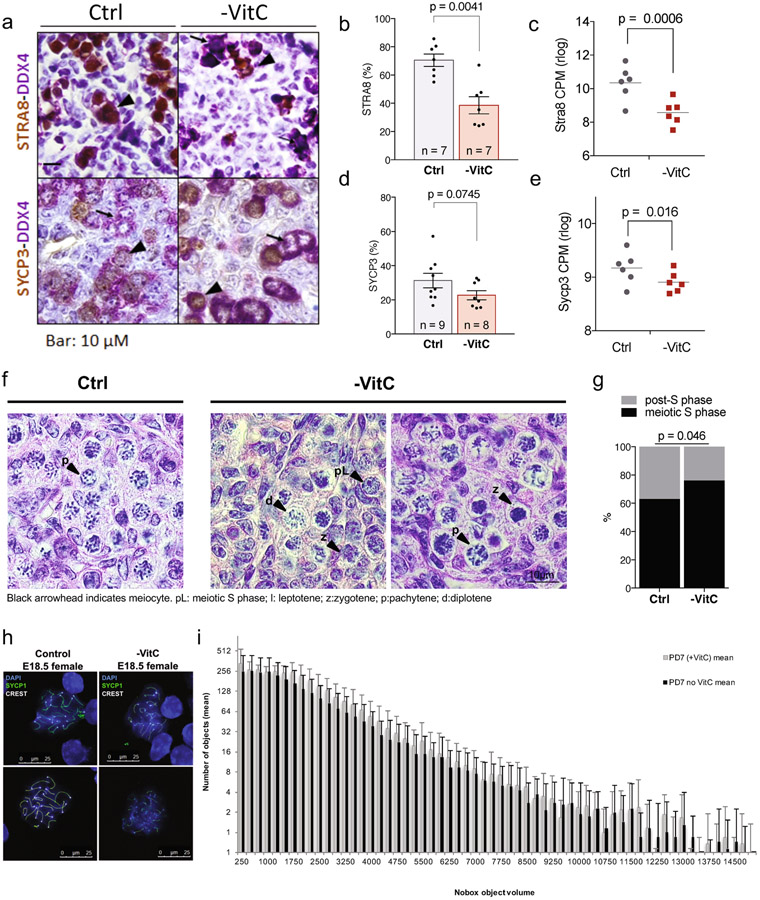Extended Data Figure 5 ∣.
Further analyses of RNA-seq data from Vitamin C-deficient E13.5 female germ cells.
a, Table of RNAseq samples and number of germ cells per sample. Each sample represents germ cells from a single E13.5 female.
b, Unsupervised hierarchical clustering of n=6 biological replicates in each condition documents the overall separation between Ctrl and -VitC samples (columns) and relative gene expression (rows).
c, Scatterplot of differential gene expression in Vitamin C-deficient E13.5 female PGCs of genes called differentially expressed in E13.5 Tet1−/− female PGCs8. Spearman’s rho statistic is used to estimate a rank-based measure of association.
d, Expression of Dnmt and Tet genes in -VitC samples are similar to Ctrl samples. Error bars depict mean ± SD of n=6 biological replicates per condition. Statistical significance assessed by two-tailed Student’s t-tests.
e, Heatmap documenting the consistent expression of Tet and Dnmt genes across the 6 Ctrl samples and 6 -VitC samples.
f, Expression of other genes belonging to families of enzymes with the potential to be Vitamin C-sensitive (Kdm’s, collagen hydroxylases, HIF hydroxylases, etc). None of these displays differential expression in Vitamin C-deficient female germ cells. Error bars depict mean ± SD of n=6 biological replicates per condition. Statistical significance assessed by two-tailed Student’s t-tests.

